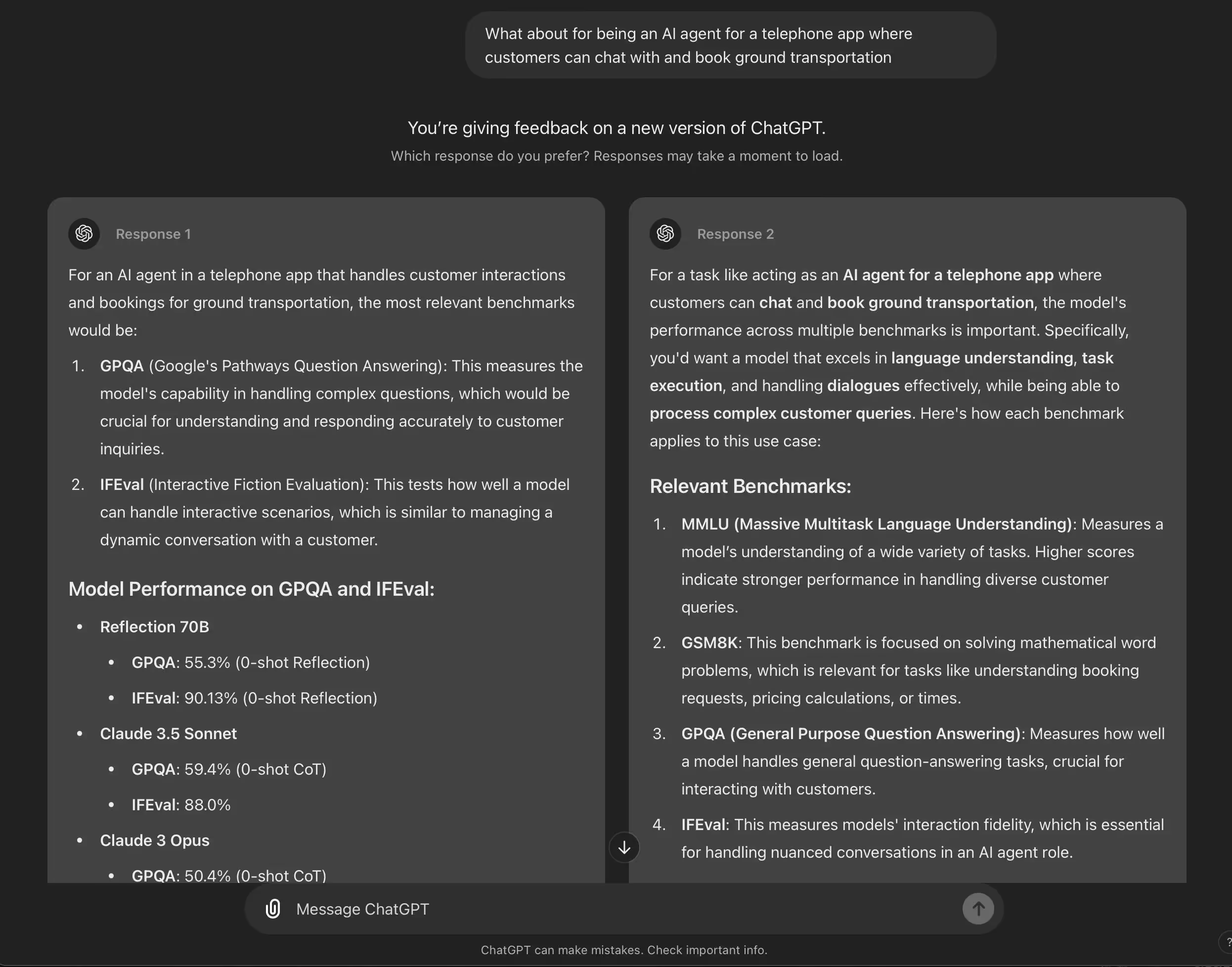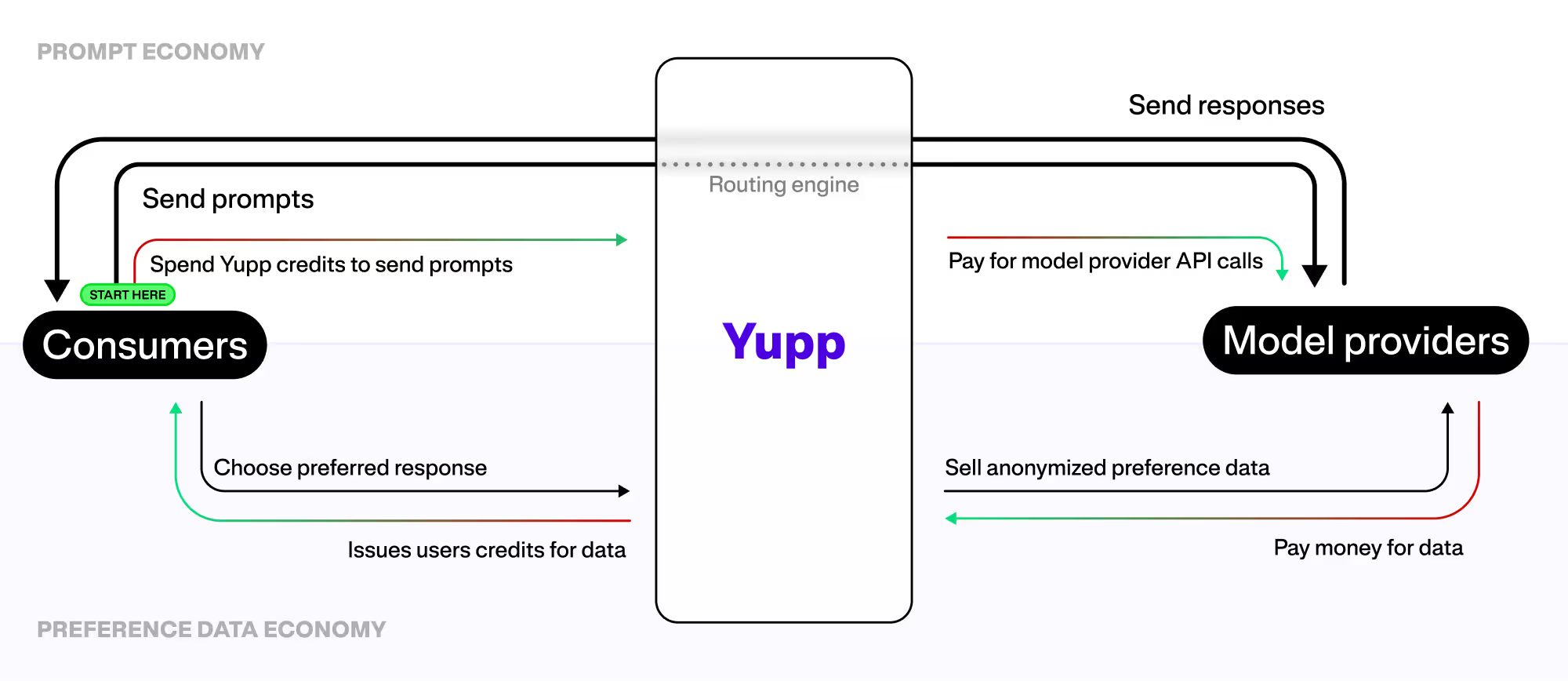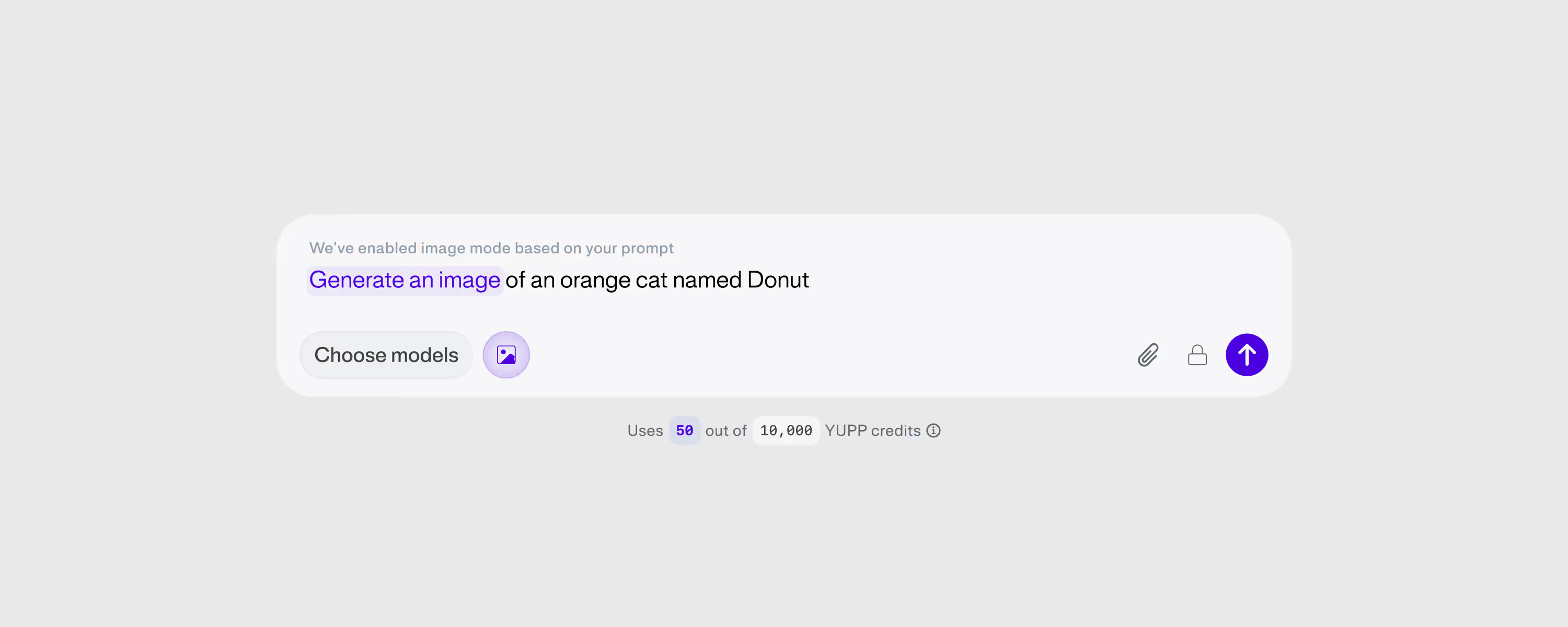How can we reinvent the relationship between humans and machines?

Founded by Coinbase's former VP of Engineering and the former head of AI at Google X and Twitter, Yupp is pioneering a new kind of consumer AI product. Yupp has now grown to over 30 employees.
I joined Yupp as its founding designer and employee 10 shortly after it closed its series A, led by a16z, to establish design as a discipline at the company, build a design team, and design the foundation of the early product and brand. I worked in close partnership with Jeff Smith who served as design advisor.
Founded by Coinbase's former VP of Engineering and the former head of AI at Google X and Twitter, Yupp is pioneering a new kind of consumer AI product. Yupp has now grown to over 30 employees.
I joined Yupp as its founding designer and employee 10 shortly after it closed its series A, led by a16z, to establish design as a discipline at the company, build a design team, and design the foundation of the early product and brand. I worked in close partnership with Jeff Smith who served as design advisor.
A quick note about financial case studies
The designs below are concepts that include placeholder, randomized data for illustrative purposes. Any similarity to real life events are purely coincidental. Nothing contained herein is or should be construed as investment advice, legal advice, solicitation or encouragement to conduct any financial transaction, advertising for any current or future offering of any token or security, or knowledge of a company's future token or security offering plans.
Yupp is a consumer artificial intelligence company that's based on three simple but powerful principles:
- First, artificial intelligence, like all tech infrastructure, are eventually commodities. Value in technical capabilities—what's possible—has always moved to the application layer—how those commodities are composed. ChatGPT is basically a technical demo to illustrate OpenAI's research breakthroughs; only recently has people started to think of it as a product in and of itself.
- To understand the effects of a system, look at the incentives at work in that system. Today, AI tooling comes from AI research companies whose interest is in making a single "God model"—one general superintelligence to rule them all.
- Data is AI's lifeblood...and its liability. AI's ability to improve is linearly correlated with the amount of data it's trained on. Today, AIs have read the entire internet, leaving researchers with a vacuum commonly called the "data wall".
At Yupp, we aim to create the best place to try and compare multiple AIs, all in one place. The core of this value prop is comparison: seeing two AI responses side by side:

For prominent figures in the AI space like Andrej Karpathy, this kind of comparison between AIs can be the gold standard to understand AI performance:
And indeed, ChatGPT itself often uses these comparisons within their own product:

But ChatGPT, like all model providers, lacks the capability to compare its models to peers.

Principles
If brands make promises, interfaces deliver on them. Ours are focused, vibrant, creative workspaces that get out of the way to help users focus on content, not how to use the product.

The human prompt...
For an AI product, the prompt box is the steering wheel. We designed ours to be as much an extension of the user's mind and hand as possible. The prompt box gets out of the way when it's not focused, minimizing to take up as little of the screen as possible, and it surfaces helpful UI when you start to type again.

Yupp brings hundreds of AIs together in one place. Extending the car metaphor, we designed this to be self-driving first: by default, the system picks the best AI for your prompt.
But some want to choose AIs directly, and for that reason and to illustrate the power of the system, you can also pick which models you'll send your prompt to:

But with hundreds of AIs to choose from, things quickly get overwhelming.
Pop quiz: what's the difference between Llama Guard 4 12B and Llama 3.3 70B Versatile? Models aren't exactly known for their clear, descriptive names.
How might we illustrate the key difference between these models (turns out, it's speed of response generation) to the user?

...and the AI response
Yupp lets you compare multiple AI responses side by side, then choose which you prefer to win credits that you can use to send more prompts.
If the prompt box is the steering wheel, the response cards are the road ahead—equally essential. We spent many hours exploring various versions of these response cards, ultimately settling on a dipped-in-color design that puts the brand colors of the AIs, and their personality, front and center.

When it came to the design of the response card, the details made all the difference. These were deceptively complex to design; we went through numerous iterations.
Little big details
Some of these details make a big difference in making the interface feel alive. For instance, we animated the action buttons to pop open when clicked, giving the whole response card an extra feeling of consumer-y fun.
Users sometimes choose their favorite models directly, but most of the time, they rely on our system to dynamically route their prompt to the AIs that are best suited to answering it. We expose this intelligence and its value through a dynamically-generated routing reason that illustrates why the system chose a certain model:

Our system as an orchestration layer
Clearly branding the AIs in distinctive, branded cards had a secondary effect: it let us make everything else more background, including "us" (our own AI voice).
We call this voice "Butler" because we see Yupp as the orchestration layer that organizes your AI council—the AIs you rely on to not only provide differential opinions, but to organize together to get things done (more on this below).
.avif)
Agentic intelligence
While AI responses are powerful, they're still just text. Ultimately, the things that have made more complex GUIs useful will still be useful in an AI future. How might we invoke not only the right answer, but the right way to display that answer, for the situation at hand?
And moreover, how might we enable users to accomplish multi-step tasks? Imagine wanting to go on a trip. How could we show the weather, flights, hotels, rental cars, things to do, and more in a single, AI-mediated interface?
Our answer to both was something we called YApps, or "Yupp Apps":

All of this influences our Leaderboard—the best place to compare various AIs performance.




